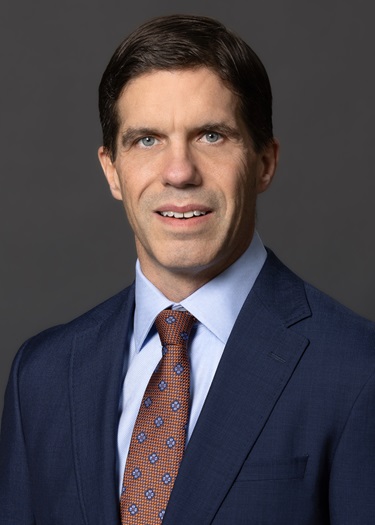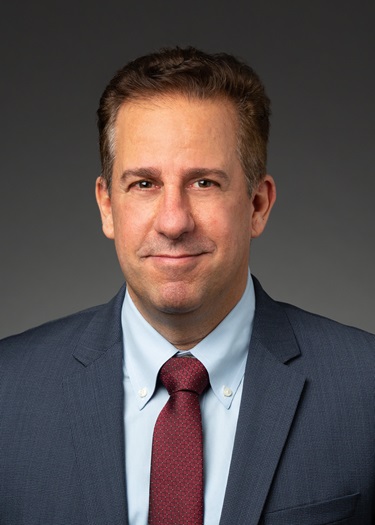Tax / Energy Update
IRS Provides Clarity for Carbon Capture Projects
In the ruling, the IRS concludes that (i) a taxpayer need not own every component of carbon capture equipment within a single process train to be eligible for the Section 45Q Credits, as long as it owns at least one component, and (ii) for purposes of the Section 45Q Credits, the placed-in-service date of a single process train of carbon capture equipment at an existing facility is the date that the single process train is placed in a condition or state of readiness and availability for the capture, processing, and preparation of carbon oxide for transport for disposal, injection, or utilization, notwithstanding that the emitting or separating facility itself was placed in service at an earlier date.
Background. Section 45Q provides a tax credit to taxpayers who use carbon capture equipment to capture qualified carbon oxide from an industrial facility or from the atmosphere and sequester it, or use it (i) as a tertiary injectant in a qualified enhanced oil or natural gas recovery project (EOR) and then dispose of it in secure geological storage, or (ii) in certain fixation projects using photosynthesis or chemosynthesis involving chemical conversion and subsequent storage, or for certain other purposes for which a commercial market exists.
The Section 45Q Credit is a per-metric-ton tax credit, the amount of which ranges from $10 to $50 per metric ton, depending on the manner in which the captured carbon oxide is used or disposed of and the applicable year. Projects that use the captured carbon for permitted commercial use, such as EOR, are eligible for a credit of up to $35 per ton. Projects that capture carbon and securely store it in a secure geological storage are eligible for a greater amount of credit — up to $50 per ton. Owners of eligible carbon capture equipment generally may claim the Section 45Q Credits over a 12-year period starting on the date the equipment is first placed in service.
The final regulations issued earlier this year simplified the definition of “carbon capture equipment” by removing the components list included in the proposed regulations and replacing it with a broader, “functionality-based” definition. Under the final regulations, carbon capture equipment includes all components necessary to compress, treat, process, liquefy, pump, or perform some other physical action to capture or process carbon oxide. Carbon capture equipment excludes, however, equipment used for transporting qualified carbon oxide for disposal, injection or utilization. All components that make up an independently functioning process train capable of capturing, processing, and preparing carbon oxide for transport will be treated as a single unit of carbon capture equipment (referred to in the final regulations as a “single process train”).
This broader definition of carbon capture equipment created some uncertainty regarding the timing of the placed-in-service date of newly installed carbon capture equipment in existing industrial facilities, with existing equipment that becomes part of a single process train with the newly installed equipment (i.e., is the newly installed carbon capture equipment placed in service on the date the older equipment included in the single process train was placed in service or on the date when the new carbon capture equipment is installed). The ruling addresses this issue as well as other related questions.
Revenue Ruling 2021-13. The ruling pertains to a plant that produces methanol from petroleum coke in a multistep industrial process involving an acid gas removal (AGR) unit. The AGR unit purifies raw synthesis gas by removing unwanted components, including CO2, which is then released into the atmosphere or captured.
The AGR unit at the facility was placed in service on January 1, 2017, and until 2021 the facility released into the atmosphere all CO2 without claiming any Section 45Q Credits. In 2021, the taxpayer purchased and installed, alongside the AGR unit, new components of carbon capture equipment necessary to create a single process train that captures, processes, and prepares the CO2 released from the methanol facility. The taxpayer that owned the newly installed carbon capture equipment did not own any interest in either the AGR unit or the facility itself.
The ruling addresses a number of questions.
Can the existing AGR unit be treated as carbon capture equipment?
The ruling first addresses the question whether the AGR unit constitutes carbon capture equipment. It observes that all components that make up an independently functioning process train capable of capturing, processing, and preparing carbon oxide for transport are treated as a single unit of carbon capture equipment.
The IRS concludes that because one of the functions of the AGR unit is to separate CO2 from a gas stream, it is treated as carbon capture equipment for purposes of Section 45Q.
Who can claim the Section 45Q Credits?
In the case of qualified carbon oxide captured using carbon capture equipment that is originally placed in service at a qualified facility on or after February 9, 2018, the Section 45Q Credit is attributable to the person who owns the carbon capture equipment and physically or contractually ensures the capture and disposal, injection, or utilization of such qualified carbon oxide. The final regulations provide that for each single process train of carbon capture equipment, only one taxpayer will be considered the person to whom the credit is attributable.
The ruling clarifies, however, that the taxpayer is not required to own every component of the carbon capture equipment within a single process train in order to claim the Section 45Q Credits. Rather, so long as the taxpayer either physically or contractually ensures the capture and disposal, injection, or utilization of such qualified carbon oxide, it is sufficient for the taxpayer to own at least one component of the carbon capture equipment in the single process train.
When is the carbon capture equipment placed in service?
The date the carbon capture equipment is placed in service is important for several reasons. First, it is used to determine the beginning of the 12-year period during which, and the rate at which, the taxpayer can claim the Section 45Q Credits. Second, it affects the timing of the applicable depreciation deductions.
For credit-related purposes, the ruling provides that all components of a single process train shall be treated as a single unit of property, and, as such, the relevant placed-in-service date is the date that the entire process train is placed in a condition or state of readiness and availability for the specifically designed function of capturing, processing, and preparing carbon oxide for transport for disposal, injection, or utilization. Applying this rule to the facts described in the ruling, the IRS concludes that this date did not occur until the new components of the carbon capture equipment were added to the AGR unit. Therefore, for purposes of determining (i) when the 12-year credit Section 45Q Credit period begins and (ii) whether the taxpayer qualifies for the higher credits available for property placed in service after February 8, 2018, the placed-in-service date of the single process train of carbon capture equipment, which includes the existing AGR unit and the new components of carbon capture equipment, is the date the taxpayer installed the newer components in 2021.
Takeaways. Revenue Ruling 2021-13 is favorable guidance that should provide helpful clarity for taxpayers that develop and finance carbon capture equipment installed in existing industrial facilities. In particular, taxpayers should view positively the flexible and practical approach the ruling takes in determining the person who can claim the Section 45Q Credits and when the 12-year period for claiming the Section 45Q Credits begins.
Attorney Advertising—Sidley Austin LLP is a global law firm. Our addresses and contact information can be found at www.sidley.com/en/locations/offices.
Sidley provides this information as a service to clients and other friends for educational purposes only. It should not be construed or relied on as legal advice or to create a lawyer-client relationship. Readers should not act upon this information without seeking advice from professional advisers. Sidley and Sidley Austin refer to Sidley Austin LLP and affiliated partnerships as explained at www.sidley.com/disclaimer.
© Sidley Austin LLP
Contacts
Offices
Capabilities
Suggested News & Insights
- Stay Up To DateSubscribe to Sidley Publications
- Follow Sidley on Social MediaSocial Media Directory

